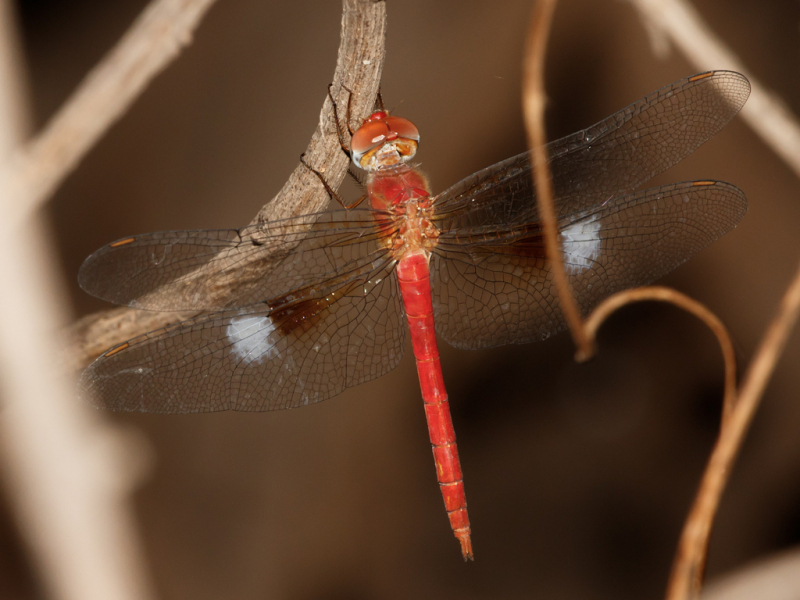The photo above (by John Wilkinson) can be viewed in OdonataMAP here.
Find the Twister in the FBIS database (Freshwater Biodiversity Information System) here.
Family Libellulidae
Tholymis tillarga – TWISTER
(Fabricius, 1798)
Identification
Medium-large size
Length up to 48mm; Wingspan attains 79mm.
Adult males are distinctive and unmistakable. The thorax and abdomen are overall coral-red and without any obvious markings. The brown and white blotches in each hindwing are diagnostic.
Females are less distinctive but are identifiable by the feint brown panels in the hind wings, plain colouration and habits. They most resemble an old or worn Pantala flavescens (Wandering Glider). Female Twisters can be told apart by the feint brown markings in the hindwings and the thin dark lines at each segment on the abdomen.
Click here for more details on identification.
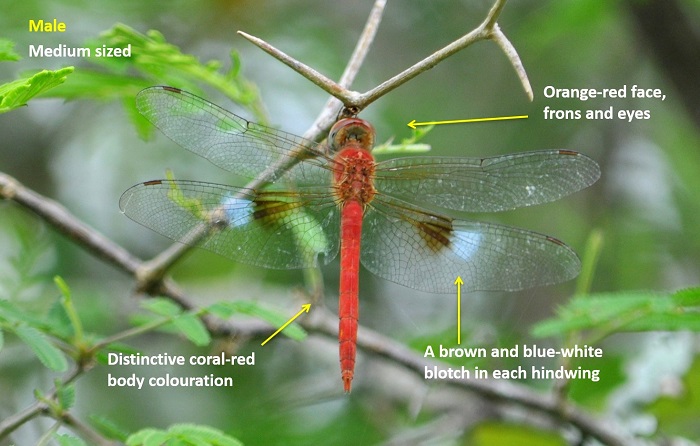
Ndumo Game Reserve, KwaZulu-Natal
Photo by Ryan Tippett
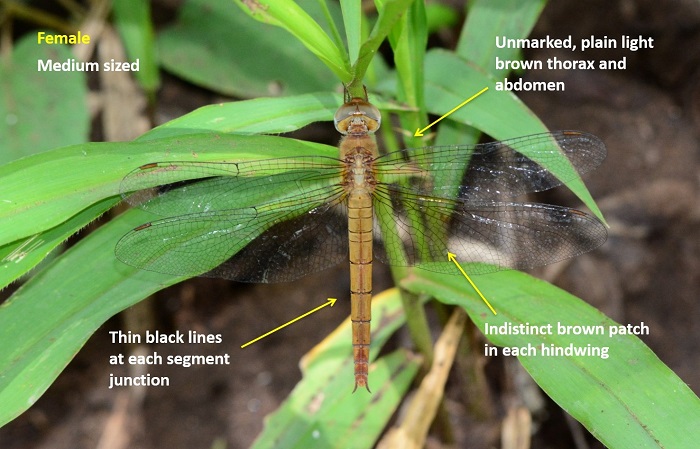
Near Hluhluwe, KwaZulu-Natal
Photo by Ryan Tippett
Habitat
Breeds at vegetated still water habitats like pans, pools, marshes and dams. Mostly found in hot, well wooded areas.

Photo by Ryan Tippett
Behaviour
This is a crepuscular species and as such is most active at dawn and dusk. They may also become active during humid, muggy weather preceding rain and thunderstorms. Rests up in the shade of trees and bushes during the day, where it may be found some distance from water. Hangs vertically when perched.
The name ‘Twister’ originates from the females habit of twisting at intervals between egg laying dips. The female deposits her eggs in flight, on slightly submerged plant stems. The male hovers nearby to protect his mate from being intercepted by rival males. Flies low and fast over water bodies while hunting.
Tholymis tillarga is resident in the tropics but migrates seasonally into the northern and southern parts of its range.
Status and Conservation
The Twister is generally scarce and localised in South Africa. It is listed in the IUCN Red List of Threatened Species as of Least Concern. This is due to its wide distribution. It can be abundant in some regions such as the Okavango delta in Botswana. It is a fairly adaptable species and does make use of suitable man made habitats for breeding.
Distribution
A widespread, tropical species that is found from tropical Africa to tropical Asia and Australia. It also occurs on many islands in the Indian and Pacific oceans.
Below is a map showing the distribution of records for the Tholymis tillarga in South
Africa. Taken from the the OdonataMAP database as at February 2020.
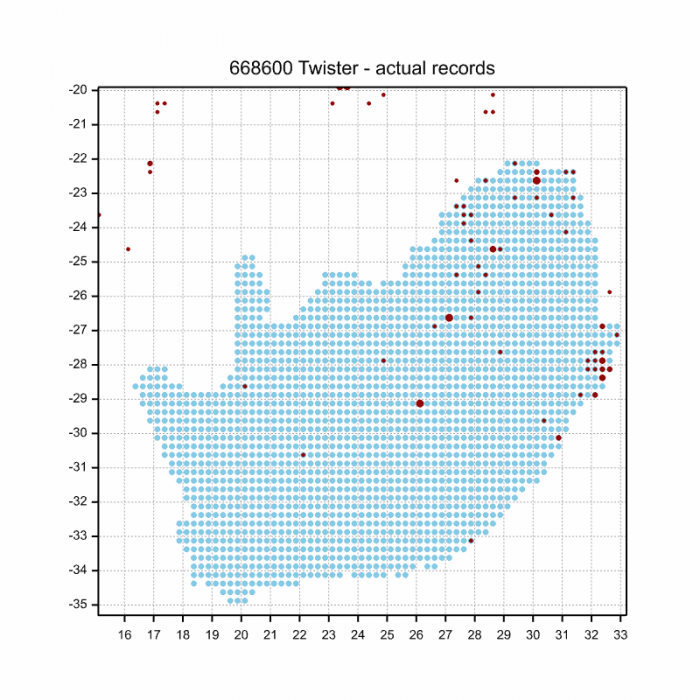
The next map below is an imputed map, produced by an interpolation algorithm, which attempts to generate a full distribution map from the partial information in the map above. This map will be improved by the submission of records to the OdonataMAP section of the Virtual Museum.
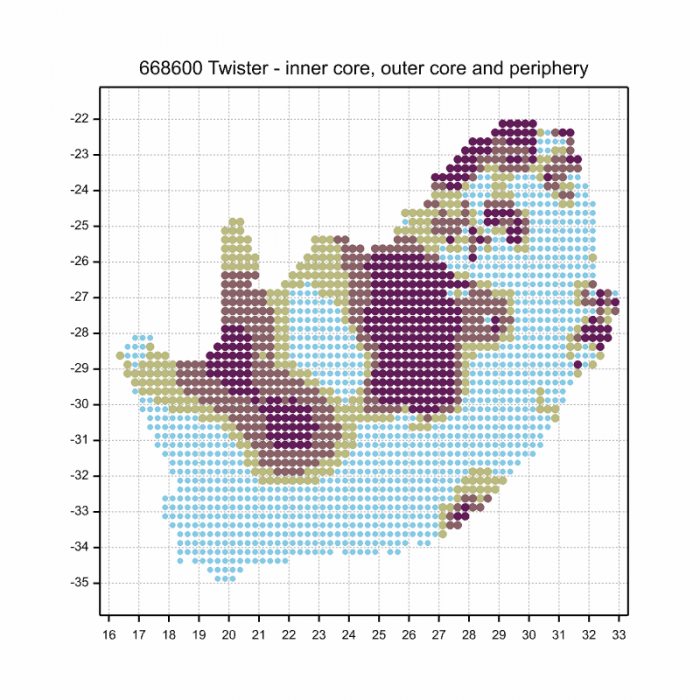

Ultimately, we will produce a series of maps for all the odonata species in the region. The current algorithm is a new algorithm. The objective is mainly to produce “smoothed” maps that could go into a field guide for odonata. This basic version of the algorithm (as mapped above) does not make use of “explanatory variables” (e.g. altitude, terrain roughness, presence of freshwater — we will be producing maps that take these variables into account soon). Currently, it only makes use of the OdonataMAP records for the species being mapped, as well as all the other records of all other species. The basic maps are “optimistic” and will generally show ranges to be larger than what they probably are.
These maps use the data in the OdonataMAP section of the Virtual Museum, and also the database assembled by the previous JRS funded project, which was led by Professor Michael Samways and Dr KD Dijkstra.
Further Resources
Virtual Museum (OdonataMAP > Search VM > By Scientific or Common Name)
More common names: Vlegtertjie (Afrikaans)
Type Locality: East Indies, no locality data available.
Recommended citation format: Loftie Eaton. M; Hofmeyr S; Tippett RM; Underhill L. Twister Tholymis tillarga. Biodiversity and Development Institute. Available online at http://thebdi.org/2020/05/12/twister-tholymis-tillarga/

